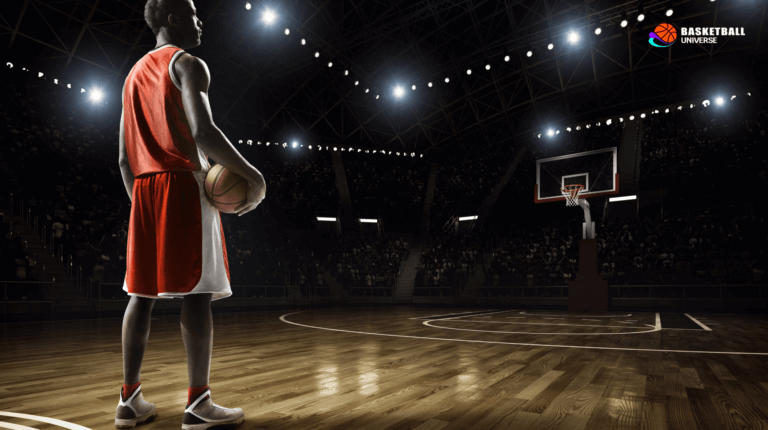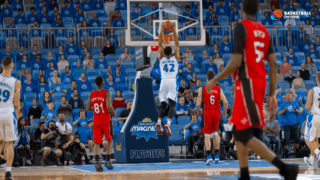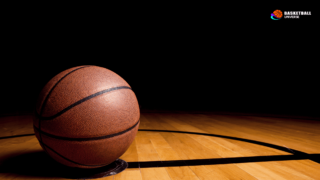
Can Basketball Shoes Be Used for Running?
Written by: Basketball Universe
Last updated:

Are you a hoop-loving athlete questioning whether basketball shoes can carry you beyond the court and onto the track for a run? In a world where footwear is designed with specific sports in mind, it’s only natural to ponder the capabilities of your beloved basketball sneakers. Brace yourself for a high-spirited exploration as we delve into the intricate world of multi-sport footwear functionality. From nuanced designs and performance to comfort and durability, this fun, yet professionally informed blog post is your go-to guide for determining if your basketball kicks are ready to accompany you on that exhilarating run.
Can Basketball Shoes Be Used for Running?
While basketball shoes can technically be used for running, they may not be the ideal choice due to differences in design, cushioning, and weight tailored to each specific sport. Basketball shoes typically offer more ankle support, a higher profile, and heavier construction, whereas running shoes focus on lightweight materials, flexibility, and optimal shock absorption. Wearing basketball shoes for running may compromise your performance and comfort, and in some cases, increase the risk of injury. It is advisable to invest in specialized running shoes for the best running experience.
Anatomy of a Basketball Shoe
Before we put our basketball and running shoes to the test, let’s first delve into the distinctive features that set basketball shoes apart. Understanding the anatomy of a basketball shoe and their unique functions will provide context for their adaptability to running pursuits.
Support and Stability
Basketball shoes are designed to offer a high level of support and stability to accommodate the intense agility and quick lateral movements of the sport. These shoes typically feature a higher cut around the ankle, sometimes with added straps and cushioning, for added security during dynamic movements. Additionally, their wide and flat bottoms also promote stability essential for maintaining balance, making swift cuts, and jumping or landing on the court.
Cushioning and Impact Protection
Jump shots, rebounds, and slam dunks are exciting to watch, but can expose players to the risk of heavy impact on their feet while landing. Basketball shoes are engineered with ample cushioning technologies like Nike’s Zoom Air, Adidas’ Boost, and Under Armour’s HOVR to absorb shocks effectively, reducing the likelihood of injuries and keeping players comfort intact.
Responsiveness and Traction
Every basketball player, from recreational to professional, requires responsive shoes to stay agile on the court. Materials like foam and compressed air have been crafted in a way that when pressure is applied, they rebound and help propel the player back up. Moreover, the outsoles of basketball shoes often boast a herringbone or multi-directional tread pattern to maximize grip and responsiveness while preventing slippage.
Characteristics of a Running Shoe
Now that we’ve examined the distinctive features of a basketball shoe, let’s shift gears and focus on the key elements that define a running shoe. This analysis will provide vital insight into their performance capabilities and why they differ.
Lightweight and Flexible
Running places an emphasis on speed, endurance, and efficiency. As a consequence, running shoes are crafted lighter and more flexible than their basketball counterparts to optimize effortless forward motion. Lightweight upper materials, like mesh and knit fabrics, are designed to embrace the foot with minimal effort for a faster stride, making long-distance runs more manageable and enjoyable.
Impact Absorption and Energy Return
Running imposes repeated stress on the feet with each stride, demanding shoes that minimize discomfort and maintain sustained energy. To address this, running shoe manufacturers concoct proprietary cushioning technologies, such as ASICS’ Gel, Brooks’ DNA Loft, and Saucony’s EVERUN, which evenly disperse impact forces while providing efficient energy return for a responsive run.
Outsole Design and Traction
When looking at running shoe outsoles, you’ll likely notice a series of thoughtfully crafted patterns and grooves. These elements not only improve traction, but also increase the shoe’s flexibility and adaptability to a range of surfaces. Different running shoes cater to specialized niches, whether you’re trail running or speeding through marathons, the traction and outsole requirements can vary significantly.
Basketball Shoes Vs. Running Shoes: A Showdown of Functionality
Now that we have dissected both basketball and running shoes, let’s draw a comparison between their respective designs and functionalities to determine if basketball shoes can measure up as running footwear.
Weight Matters
It’s no secret that basketball shoes tend to be bulkier than running shoes, which might hamper your performance during a run. Carrying extra weight over an extended period can lead to sore legs and reduce your overall efficiency while running. However, for casual and leisurely runs, the added weight might not be a deal-breaker.
Increased Stability vs. Limiting Flexibility
As previously mentioned, basketball shoes prioritize stability, which can be advantageous for quick cuts and lateral movements on the court. While this is crucial in a basketball scenario, running shoes call for a greater range of motion and flexibility to accommodate a natural running gait. Using basketball shoes for running may restrict proper forward movement, making your run less comfortable and less efficient.
Cushioning Comparison
While both types of shoes offer ample cushioning for impact absorption, the critical difference lies in how each one caters to distinct movements. Basketball shoes emphasize cushioning in the heel and midfoot regions due to the nature of jumps and landings, whereas running shoes focus on a more evenly distributed cushioning for efficient stride and energy return. Wearing basketball shoes for running may result in less tailored shock absorption and reduced overall comfort.
Potential Risks of Running in Basketball Shoes
While it’s technically possible to use basketball shoes for running, several potential risks warrant attention as they could impact not only performance but also your well-being.
Injury Risk
Footwear that’s not purpose-built for a specific sport may increase the risk of injury. Basketball shoes may offer inadequate arch support, flexibility, and cushioning distribution, thereby making your feet vulnerable to strains, sprains, or other injuries during a run. When it comes to sports activities, it’s always best to choose footwear designed specifically for that purpose.
Reduced Performance
Running in the wrong shoes, especially those designed for basketball, may compromise your run’s speed, efficiency, and overall performance. Experienced runners know that the proper running shoe is a critical component for achieving their personal best. So if you’re serious about running, investing in running shoes will yield superior long-term results.
Wear and Tear
Not only do basketball shoes lack the specific features needed for running, but using them on different terrains like pavements, grass, or trails can accelerate their wear and tear. This may lead to a reduced lifespan of your basketball shoes, requiring you to replace them sooner than expected.
Choosing the Right Shoes for Your Activity
The key takeaway from our escapade into the world of basketball shoes and running parallels is that different shoes cater to different sporting requirements. While it’s possible to run in basketball shoes, taking into account the factors discussed thoroughly, it is not necessarily recommended for regular or intense running.
Choosing the right shoes for your chosen sports activity is essential to elevate your performance, comfort, and overall experience. So, pick up your basketball sneaks for some great slam dunks and invest in specialized running shoes to hit the ground running and reach your ultimate potential!
Finding the Optimal Running Shoes for You
Now that we’ve established the drawback of using basketball shoes for running, let’s help you find perfect running shoes tailored to your specific needs. Running shoes come in distinct categories focusing on cushioning, stability, and motion control to accommodate varying foot structures, running styles, and preferences of the wearer. Here’s a step-by-step guide to simplify your search:
Identify Your Foot Type
The first step to finding the right running shoes involves identifying your foot type, accomplished through determining your arch type. Performing the “wet test” can assist you in discerning whether you have low, neutral, or high arches. Gently wet the sole of your foot and make a footprint on a piece of paper or a dry surface. By examining the size of the arch imprint, you can classify your foot type:
- Flat or Low Arch: A complete footprint indicates that also known as overpronation. Shoes with stability or motion control can help guide your feet.
- Neutral Arch: A footprint with a moderate arch-width signals that your feet are neutral. These runners can benefit from stability shoes with moderate control features.
- High Arch: A narrow arch or even no connection between the heel and forefoot identifies a high or supinated arch. Cushioned or neutral shoes with increased shock absorption are the go-to choices for these runners.
Consider Your Running Style
Analyze your running style, such as the distance you primarily cover, the type of terrain, and the speed at which you run. Catering to these factors, you can opt for various types of running shoes, including road, trail, and racing shoes, each designed for different surfaces, traction, and performance demands.
Pay Attention to Fit and Comfort
Your running shoes should fit your feet securely, provide enough wiggle room in the toe box, and not feel too tight or too loose. Trying on shoes in the later part of the day or after a workout can account for foot swelling that naturally occurs during a run. Remember that the goal is to find the ultimate balance between support and overall comfort.
Consult a Professional
For personalized recommendations, don’t hesitate to consult with running shoe experts at specialized running stores or seek advice from experienced runners in your community. A professional gait analysis can fine-tune your understanding of your running style and associated shoe needs.
Maintaining Your Footwear
Whether you invest in basketball shoes, running shoes, or both, taking care of your footwear will ensure that you get the most out of their performance abilities and longevity. Here are a few tips for proper shoe maintenance:
Rotate Your Shoes
It’s always a good practice to rotate your shoes, especially if you’re engaging in various activities. By doing so, you allow your shoes to recover and retain their cushioning, support, and shape. For instance, consider having separate pairs for basketball practices, running sessions, and everyday casual wear.
Keep Them Dry
Wet shoes can breed bacteria, leading to unpleasant odors and diminishing the materials’ structural integrity. Make it a habit to air dry your shoes after usage and keep them away from direct heat sources that could potentially damage the shoe’s construction.
Replace Shoes When Needed
Keep an eye on your shoes’ wear and tear, as it can directly impact your performance, comfort, and risk of injury. A good rule of thumb dictates that running shoes should be replaced after approximately 300-500 miles, while basketball shoes may need replacement after one full season. Trust your feet; if a shoe no longer feels comfortable or supportive, it’s time to invest in a new pair.
Armed with the knowledge of why you should avoid using basketball shoes for running and how to choose the right running shoes, you’re now ready to embark on your athletic journey with comfort, confidence, and style!
Frequently Asked Questions (FAQs)
If you’re still curious about the differences between basketball and running shoes or eager to learn more about choosing the right sporting footwear, our FAQ section has you covered. Find answers bursting with informative, concise tidbits to help you stay ahead in the shoe game and make informed decisions regarding your athletic wear.
1. How much ankle support do running shoes provide compared to basketball shoes?
Running shoes usually provide moderate ankle support compared to the high-top design and additional padding provided by basketball shoes, specifically engineered to protect ankles during swift lateral movements and jumps. However, running shoes offer enough support for forward motion and maintain a lightweight design.
2. Can I wear my running shoes for basketball?
While you can technically wear running shoes for basketball, they won’t provide the same level of ankle support, lateral stability, and cushion distribution needed for basketball, potentially increasing the risk of injury and hampering performance. It’s always preferable to wear sport-specific shoes.
3. Can basketball shoes be used for casual wear?
Yes, basketball shoes can be worn for casual wear, providing a comfortable and stylish option, especially with the prevalence of popular brands and celebrity endorsements. However, don’t forget that extended casual usage may contribute to wear and tear, impacting their performance on the court.
4. How often should I replace my basketball shoes?
Generally, basketball shoes need to be replaced after a full season of play. Monitor your shoes for signs of wear and tear, and if they start to feel less supportive or comfortable, it may be time for a new pair. Rotating your shoes between basketball and casual wear can prolong their lifespan.
5. How often should I replace my running shoes?
Running shoes should be replaced roughly every 300-500 miles, depending on the shoe type, your weight, and running style. When the cushioning or support becomes insufficient, or the shoes start to feel uncomfortable and less efficient, it’s time to seek out a new pair.
6. Can I use basketball shoes for weightlifting or gym workouts?
Basketball shoes may not be suitable for specific gym exercises and weightlifting due to their high profile, cushioning, and support features. Flat, solid shoes with minimal cushioning, like weightlifting or cross-training shoes, are generally recommended for such activities, offering improved balance and stability.
7. Are all running shoes suitable for all terrains and running styles?
No, running shoes come in various categories, including road, trail, and racing shoes, each designed to cater to distinct terrains, speeds, and performance demands. To find the right running shoe, consider your running style, distance, and preferred terrain when making a selection.
8. Can I wash my basketball or running shoes in a washing machine?
While it might be tempting, washing your athletic shoes in a washing machine can jeopardize the shoe’s construction, support, and materials. Instead, use a damp cloth or brush to gently clean the shoes’ surfaces, and always air dry them away from direct heat sources.
9. How can I determine the right shoe size for my feet?
When trying on shoes, ensure they fit securely around your foot without excessive tightness or looseness. Your feet should have enough room in the toe box to wiggle comfortably. Measure both of your feet and try on shoes later in the day or after a workout to account for natural foot swelling.
10. How tight should my laces be when wearing basketball or running shoes?
Your laces should be snug enough to secure your feet comfortably but not too tight as to restrict blood flow or cause discomfort. Experiment with different lacing techniques to find the perfect balance of support, comfort, and stability for your feet.
11. How do I know if my shoes have adequate cushioning for running or basketball?
During a workout or game, take note of any feelings of impact, discomfort, or strain on your feet. If you experience discomfort or pain even when wearing properly fitted shoes, considering additional cushioning or exploring alternative footwear options that cater to your specific activity might be helpful.
12. How long does it take to break in new basketball or running shoes?
Breaking in new shoes can take anywhere from a couple of hours to a few weeks, depending on the shoe’s materials and construction. It is crucial to wear new shoes for shorter sessions initially, gradually increasing usage as they conform more comfortably to your
Featured Posts
- No pillar pages found.





